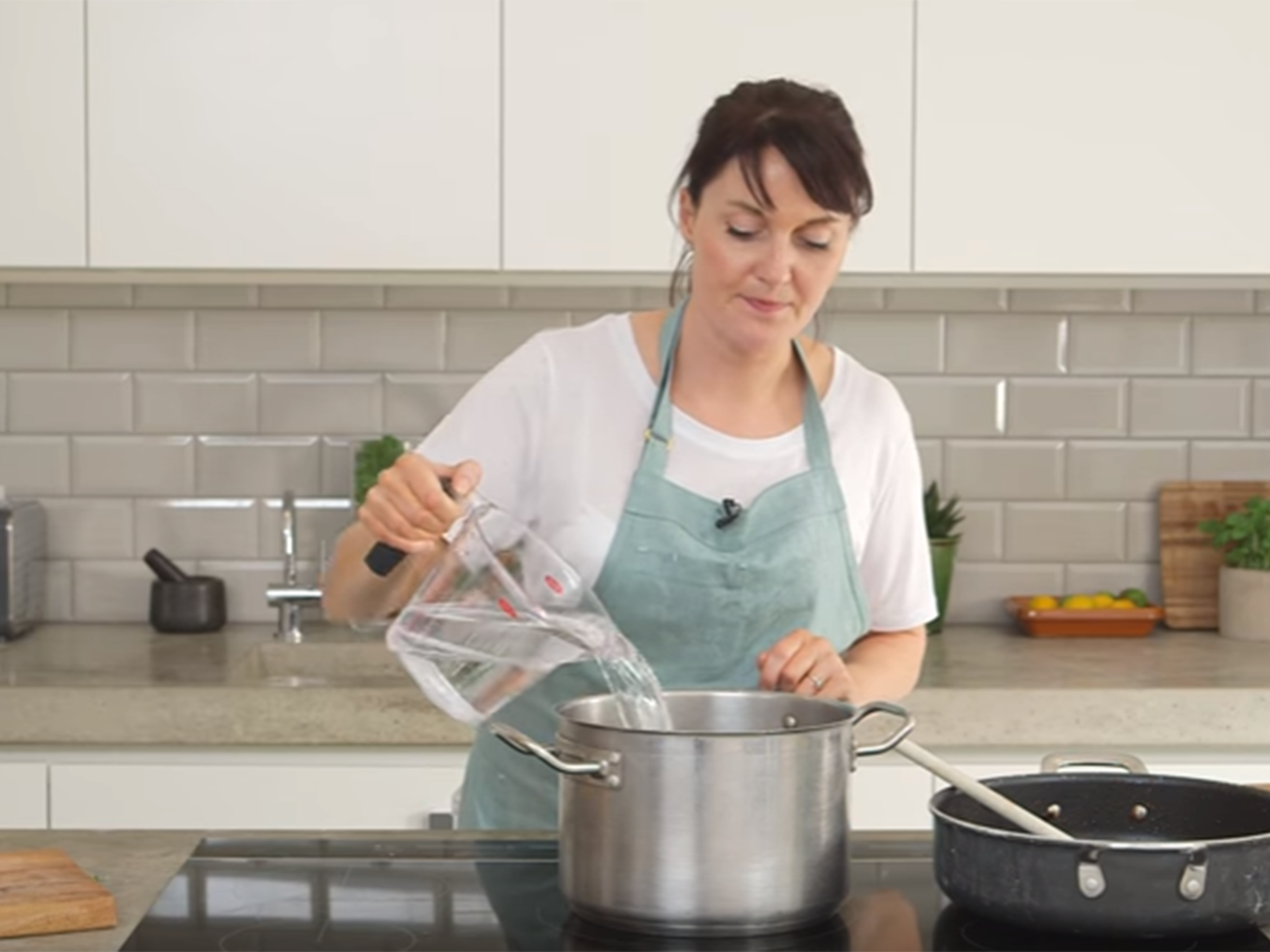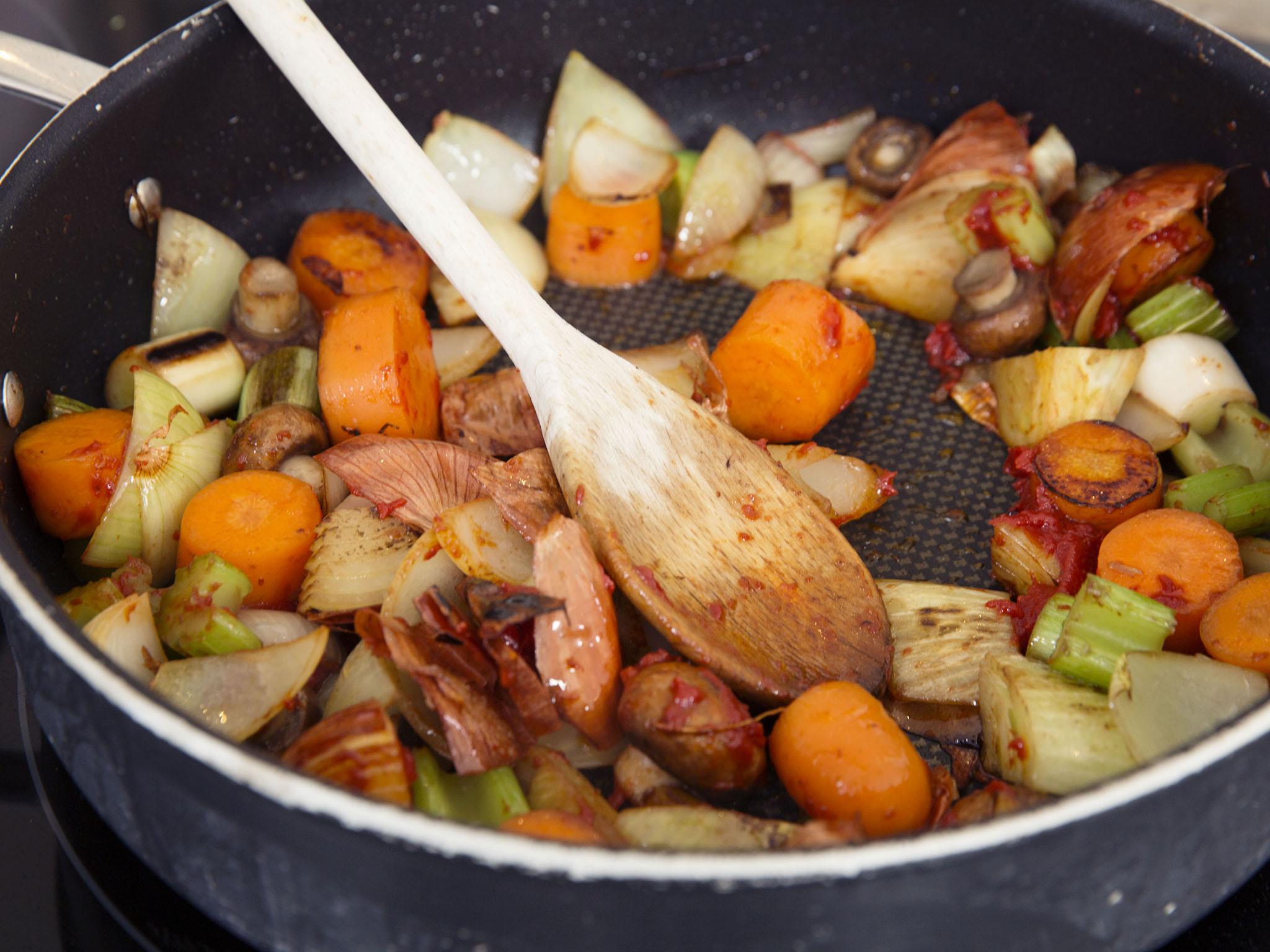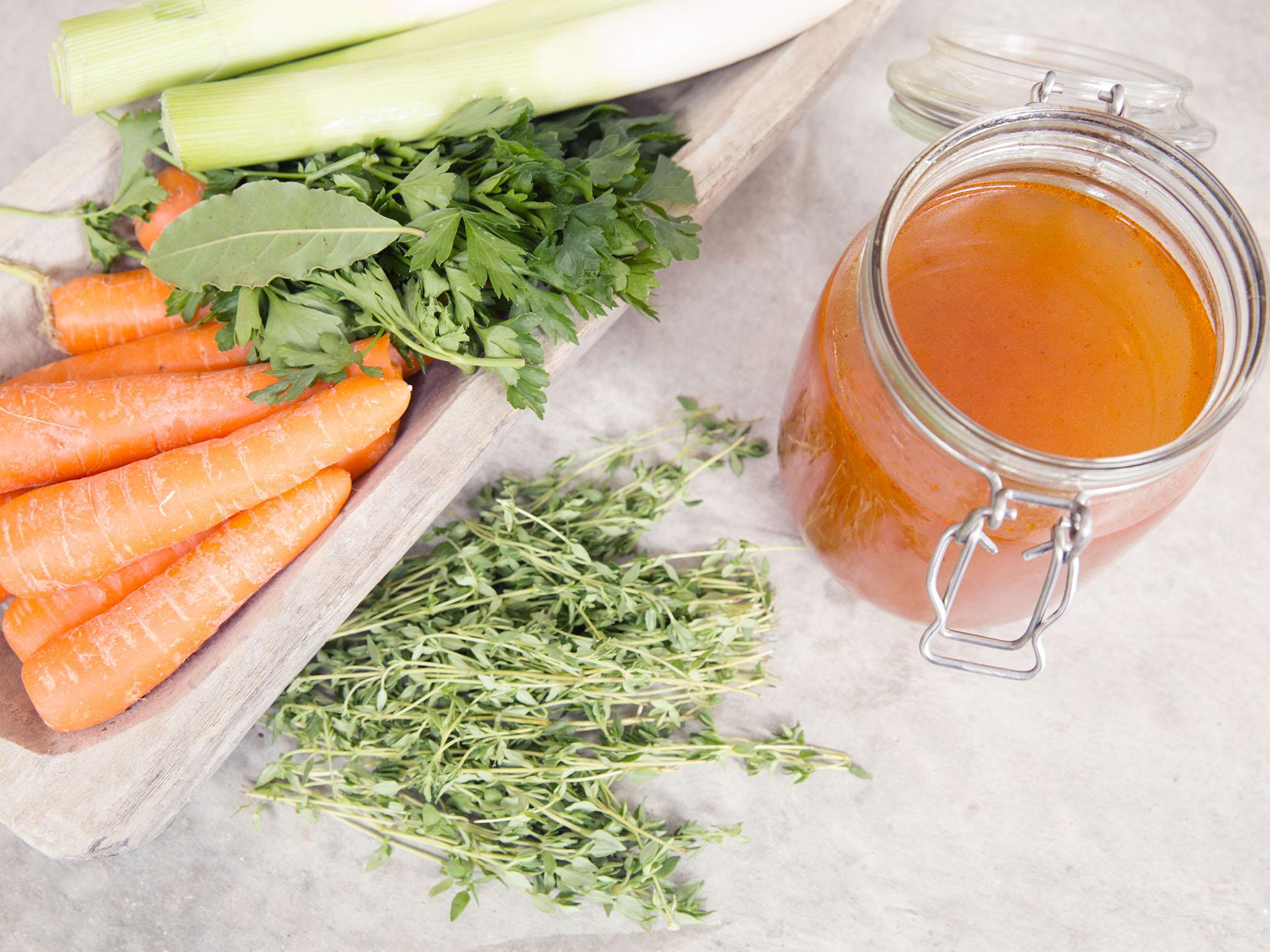Kitchen Essentials: How to make vegetable stock
In our weekly Kitchen Essentials column Laoise Casey shares how to make a proper vegetable stock

Your support helps us to tell the story
From reproductive rights to climate change to Big Tech, The Independent is on the ground when the story is developing. Whether it's investigating the financials of Elon Musk's pro-Trump PAC or producing our latest documentary, 'The A Word', which shines a light on the American women fighting for reproductive rights, we know how important it is to parse out the facts from the messaging.
At such a critical moment in US history, we need reporters on the ground. Your donation allows us to keep sending journalists to speak to both sides of the story.
The Independent is trusted by Americans across the entire political spectrum. And unlike many other quality news outlets, we choose not to lock Americans out of our reporting and analysis with paywalls. We believe quality journalism should be available to everyone, paid for by those who can afford it.
Your support makes all the difference.There is something satisfying and reassuring about making stock at home. It is perhaps the antithesis to ready meals and takeaways. With a few staple ingredients and a little bit of time you can create a base which you can then use to make so many dishes. At its simplest, a good stock can form the base for a soup. Or make a beautiful chicken, leek and mushroom pie which starts with a brown vegetable stock.
Stocks fall into two main categories: A white stock is where the ingredients are placed directly into the cooking liquid. In a brown stock they are firstly browned. Here I’m using the brown stock method as I prefer the richer flavour from caramelising the vegetables. For me, a vegetable stock is the ideal way to learn the stock making process and then you can start making chicken, beef or fish ones. The basic principles are the same. Use the best vegetables you can get. Think about what vegetables you enjoy eating and then experiment with different aromatics. I have added some fennel for a little aniseed taste. I am using some traditional aromatics such as parsley, bay leaf and thyme, but try adding spices, or other herbs to build on these.
You can then make
Turn a vegetable stock into a comforting winter soup with a dash of cream, a knob of butter and some cubed roast butternut squash. Top it with toasted croutons. To turn it into a full meal I like to serve it with poached eggs and crusty bread. Some shredded ham hock would work well here too.

Use it to cook cous cous, polenta, risotto or grains. A stock will also enhance stews, curries, and shepherd’s pie. Make a butterbean mash by cooking dried, soaked butterbeans in vegetable stock. Drain, then blend, mixing back in a little of the vegetable stock. Serve with crispy pancetta on top and a side of sautéed kale.
Poach a chicken breast in gently simmering stock until tender. I love this with crispy herb potatoes and pickled red cabbage, carrot and caraway ‘slaw.
Tips
Avoid using starchy vegetables such as potatoes, as they will make your stock cloudy. Taste and season your stock as you cook it, remembering that the flavour will intensify as you reduce it. Use a tall narrow saucepan to retain as much aroma as possible. Keep vegetable trimmings and use them up in stocks. Chop all the vegetables to roughly the same size so that they cook evenly. I like to leave the peel on the onions for added colour and taste.
How to make brown vegetable stock (makes 1 litre)

Ingredients
2 onions, unpeeled
1 leek (use the green part also)
2 carrots
2 stalks celery
½ bulb fennel
10 button mushrooms
3 tbsp vegetable oil, plus extra if needed
2 tsp tomato paste
5 parsley stalks
1 tsp black peppercorns
1 bay leaf
Few sprigs fresh thyme
Sea salt flakes, to season
2.5 litres cold water
Equipment
Board
Knife
Frying pan
Large narrow saucepan
Spoon
Sieve
How to
Chop all the vegetables to roughly the same size. Heat the oil in a large frying pan and cook all the vegetables in it over a medium heat. I prefer to add the mushrooms towards the end of the cooking as they cook more quickly. When the vegetables are nicely browned add the tomato paste and cook until it caramelises to a red/brown colour (3 – 4 minutes). Transfer the vegetables to a narrow saucepan along with the parsley stalks, peppercorns, bay leaf, thyme and salt. Pour in the water and stir. Bring to the boil and simmer for between 30 minutes – 1 hour. Strain and reduce to the required consistency/taste. Check the seasoning after reducing and adjust as necessary.
You can keep this in the fridge in an airtight plastic container for 4 – 5 days. Alternatively, pour into an ice cube tray and freeze for up to a month then defrost the cubes as you need them.
Next week’s Kitchen Essentials: How to make yoghurt
For more tips follow Laoise Casey: Twitter @laoisecooks Instagram @laoisecooks
Join our commenting forum
Join thought-provoking conversations, follow other Independent readers and see their replies
Comments